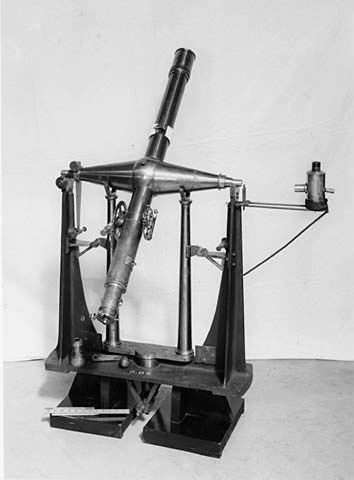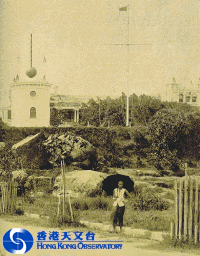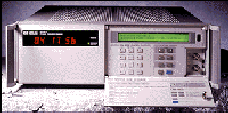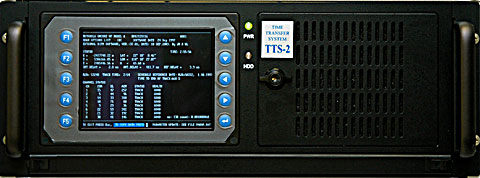Milestones of the Hong Kong Observatory Time Service
1883

Local time was determined by astronomical observations at the Observatory by using a 6-inch Lee Equatorial and a 3-inch Transit Circle.

Similar type of transit instrument used by the Observatory for determining the time with astronomical observations in the 19th century.
1885-

1933
Time signals were indicated by dropping a time ball at 13:00 hour each day.

Time ball near Marine Police station, Tsim Sha Tsui, first used in January 1885. The time ball was moved to Blackhead's Point in 1908.
1904
Greenwich Mean Time (GMT) was adopted as Hong Kong Official Time.
1924

The Leroy 1350 Pendulum Clock was installed in 1924. It is the oldest surviving instrument in support of the Observatory’s time service.

1950

Pendulum clock was installed and regulated by radio time signals from other centres. Timing accuracy gradually improved from seconds to within one-fifth of a second.

Pendulum clock in Hong Kong Observatory (1950-1966)
1966
Quartz controlled timing system was used to replace the pendulum clock. Accuracy was increased to 80 milliseconds. HKO also directly broadcast the 6-pip time signal on 95 MHz until 1989.
1972
Coordinated Universal Time (UTC) was adopted as Hong Kong official time standard.
1980

The first Caesium Beam Atomic Clock was acquired with an accuracy to fractions of a microsecond per day.

1998
Telephone Information Enquiry system was put into operation to provide time check through telephone.
1999
Network time service was lanuched. Members of the public can synchronize their computer clock with the Hong Kong Observatory's time servers.
2004

Hong Kong Observatory used a high accuracy Time Transfer System to provide time information of it's atomic clock to the Bureau International des Poids Measures (BIPM) for UTC determination.

The high accuracy time transfer system of the Hong Kong Observatory